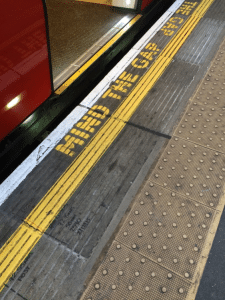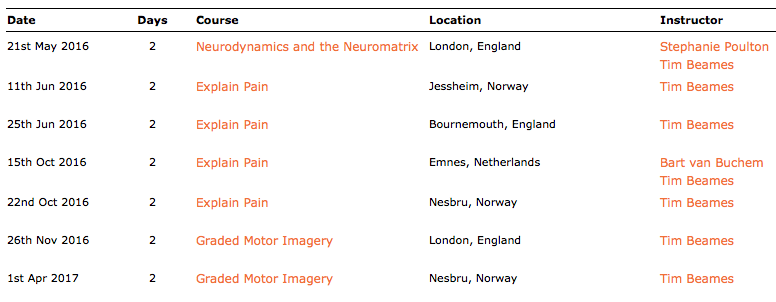Mind the gap
The London Underground or ‘Tube’ is a great place to find education in action – information sharing, rules, and occasionally, rule breaking. The ‘Mind the Gap’ signs (and t-shirts) excite many tourists but on closer inspection education runs much deeper than this.
For the uninitiated, tube travellers are instructed to remain behind the yellow line (on the platform) and mind the gap between the train and platform. It seems ridiculous all these rules and prompts. We know these rules (implicitly) already, don’t we?

You stand on the right hand side of the escalators (unless you want to walk up or down them). Can’t those tourists in the left hand (wrong) lane read the signs?! They’re everywhere. They’ll just get bumped, jostled and huffed at as the natives show their displeasure (and subsequently form an orderly queue behind them until the end of the escalator).
And what about moving down inside the train!!
I feel there’s an Orwellian sense of inevitability about education on the Tube. Perhaps this is true. Certainly, the professional commuter will scrutinize your every misplaced step from behind their newspaper or iPhone.
This is your driver speaking
I’ve been enjoying re-evaluating my Tube journeys.
There appears to be a disparity of education between the various lines. I’m most impressed by the Hammersmith and City (pink) Line driver announcements:
“We’ve been stopped at a red signal. We’ll be on our way as soon as the train in front has left the platform.”
Passengers visibly relax, with the expectation they’ll reach their meeting in time.
Repetition appears to be important too, especially for those longer waits. Two or three minutes of silence during an unscheduled stop feeds frustration and annoyance.
Top quality service even includes some contextual variation in the message – the wording or delivery – an automated message, followed by the driver offering his personal support for the anguished traveller. “This is your driver speaking” seems to add gravitas.
How does this relate to the person in pain? There may be some shared themes in therapeutic pain education.
– Do we have a suitable pain-related message that is delivered regularly enough to become a societally accepted norm and when hearing it becomes more a reminder than a surprise.
– Are useful bits of information ever lost in translation?
– What about timing of the message? And repetition. When will delivery of the pain-related message have most benefit and how often should it be repeated?
– Does altering the context of the message help maintain some interest in it? And if it does, should we have skills and resources to vary the context of our education?
– And how important is the deliverer of the message? Are there people that simply hold more gravitas?
I wonder where else we encounter education in our everyday lives? I wonder too how we may apply these observations therapeutically.
What are your thoughts?
-Tim Beames
Tim lives in London where he works in private practice as co-founder of Pain and Performance providing treatment for people with persistent and complex pain problems, support and guidance for clinicians dealing with complex pain patients and delivering bespoke courses for departments and organisations on pain related topics.
Tim is the principal instructor for NOI UK and co-author of the Graded Motor Imagery Handbook alongside Lorimer Moseley, David Butler and Tom Giles.
Tim has a busy schedule of courses over coming months, click on the link below for the NOI courses page for further details or to enquire about a specific course


Hi Tim,
Right on! The London tube is a wonderful place for education and metropolitan reembodiment. But when I ride it and look around, the commuters look zombiod, disinterested, usually downcast with Apple tendrils in their ears and totally disconnected with the world around them. Like someone with pain walking through a forest and just thinking about pain rather than imbibing the brilliant world around them. I sometime think this tube behaviour may have something to do with England’s less than satisfactory sporting performances over the years!.
The tube is a city dwellers environment and the zombie riders are missing out on something special. The smell, the feel, the movement, the air, the sounds, the variety of humanity, the ads and the word games you can play with them, the musical “mind the gap” (And I read that Mr Mind the Gap died recently). Play guess the riders’ profession or country of origin. The tube is great for Stage 1 and 2 of GMI – look for all the left or right hands and feet when someone is standing, or imagine yourself as someone you spot and imagine you are doing what they do. Nothing wrong with a bit of therapeutic perving as long as you don’t get caught.
Talk about theratube!
David